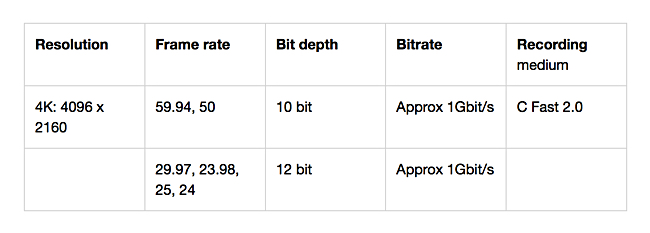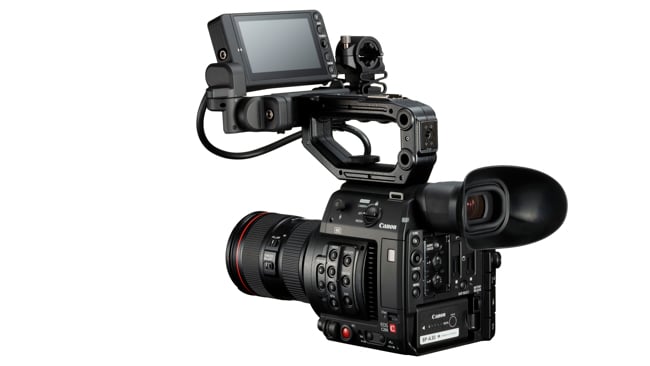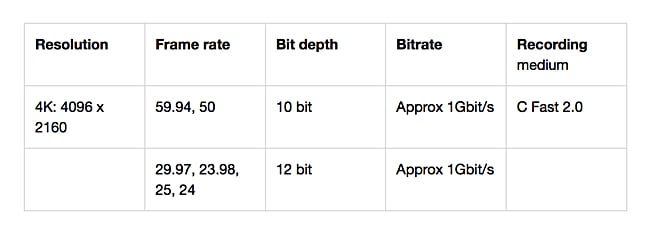
 A heavyweight mid-range contender: the new Canon Cinema EOS C200
A heavyweight mid-range contender: the new Canon Cinema EOS C200
Canon’s latest entrant in the Cinema EOS range, the £7699/€9229 4K compact EOS C200, has both the spec and the price point to be a serious competitor in the mid-range market when it ships in July.
You can read our detailed anaylsis of what the camera means for the market and for Canon here. But at first glance, there is a lot to like about the new Canon EOS C200, especially when looking down the spec sheet. New Dual DIGIC DV6 processors provide the ability to record internally 4K UHD/50P MP4, 4K DCI RAW, while continuous 120fps HFR footage is available at Full HD resolution without crop.
The camera is built around Canon’s 4K Super 35mm CMOS sensor with an effective pixel count of 8.85MP (this is the same excellent sensor as in the C700) and it has an impressive ISO range of 100 to 102,400 as well as built-in optical ND filters of up to 10 stops.
Apart from the rather competitive price — and Canon tells us that that includes tax — what probably catches the eye most is the introduction of a new RAW recording format, Cinema RAW Light. Supporting up to 15 stops of dynamic range (MP4 capture is restricted to 13) this is a compressed format. Canon like to use the term ‘data-reduced’ and the choice of Light rather than Lite is interesting, but the advantage it brings is the ability to record 15 minutes of 4K DCI 50P internally to a 128GB CFast 2.0 card.
You'll be able to record 4K DCI RAW at 12 bit resolution at framerates of 30 fps and below. At higher framerates (eg. 60p) the bit depth drops to 10 bits.

The company has made sure that plenty of third parties are on board to work with RAW Light, and the impressively inclusive list includes Adobe, Apple (with FCP X), Assimilate, Autodesk, Avid, Blackmagic, Colorfront, Filmlight, Grass Valley, In2Core, Pomfort, SAM, and SGO, though it looks like the actual date of commencement varies. In other words, it’s not short of industry backing, but people are going to be paying a lot of attention to the picture quality in the format once the first review units start circulating.
Canon’s XF-AVC video format will be available with a future firmware upgrade currently slated for next year.
Canon says that Dual Pixel CMOS Auto Focus technology and a new 4-inch / 10.1cm touchscreen LCD monitor provide smooth AF operation and effective tracking. A Manual Focus Assist Function, Face Detection with Face Priority, and Face-Only options all combine to provide a decent degree of creative focus control for users too
It weighs a meagre 1.4kg, which should make it a popular handheld choice, and also features built-in WiFi and Ethernet.
All in all, it shows a lot of promise and we’re eager to see how it performs when we get our hands on one. Canon often gets a bad rap for having an expensive product line, but often the sheer quality of the images its kit produces means that you see its cameras out and about nigh on everywhere you go. A new, lower-priced mid-range unit, which is exactly what we seem to have here with the Cinema EOS C200, could really set the market on fire.
Tags: Production


Comments